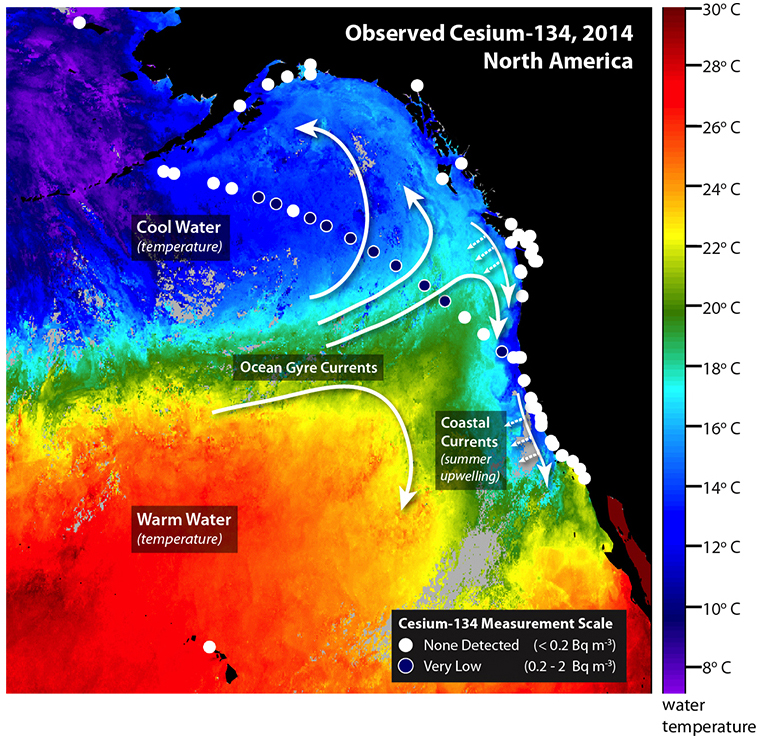Fukushima Radiation Identified off Northern California
By Tracy Loew | Statesman Journal
Low-level radiation from Japan’s Fukushima nuclear accident has been detected in multiple samples of ocean water off the Pacific Coast of the U.S. and Canada, the Woods Hole Oceanographic Institution is reporting.
The sample nearest to shore was taken about 100 miles off the coast of Eureka, in Northern California.

The levels are far below those that might pose a risk to human health or marine life, said Ken Buesseler, a WHOI marine chemist who is leading the monitoring effort.
“The levels are only detectable by sophisticated equipment able to discern minute quantities of radioactivity,” Buesseler said.
And so far, no samples taken from beaches have tested positive for Fukushima radiation.
Massive amounts of contaminated water were released from the Fukushima Dai-ichi nuclear power plant following a March 2011 earthquake and tsunami. Radioactive water has continued to leak and be released from the complex.
The radioactive plume has traveled across the Pacific, propelled largely by ocean currents and being diluted along the way.
No state or federal agency is testing Pacific waters for radiation from the crippled plant, so earlier this year Buesseler launched a crowd-funded, citizen-science effort to collect surf samples to be tested at his lab in Massachusetts.
Buesseler is looking for cesium-134, the so-called “fingerprint” of Fukushima. Cesium-134 does not occur naturally in the environment and has a short two-year half-life, so any in the Pacific today had to come from Fukushima.
He’s also looking for higher-than-background levels of cesium-137, another Fukushima isotope that already is present in the world’s oceans from nuclear testing in the 1950s and 1960s.
Processing has been completed on about 50 of the surf samples, taken from the Bering Strait to San Diego. None have been positive for Fukushima radiation.
